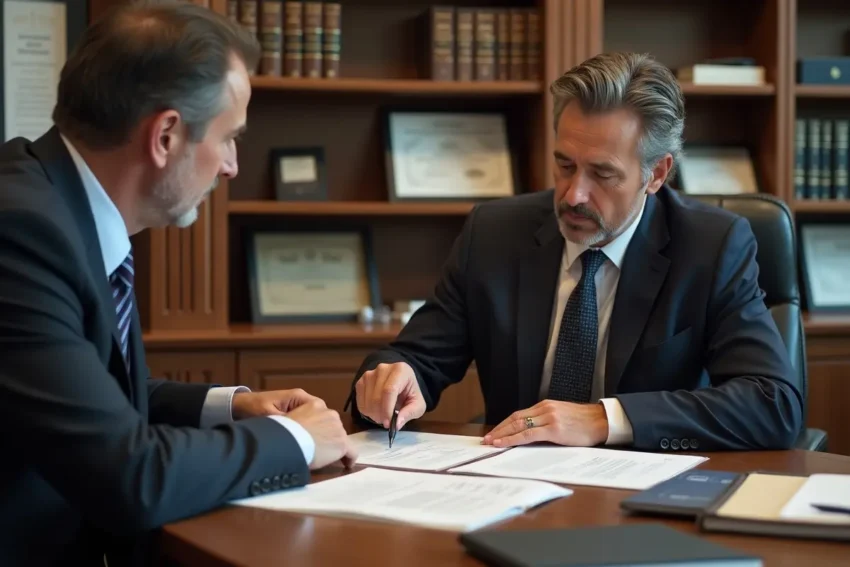What Counts as Negligent Security in Connecticut?

When you visit a business, apartment complex, hotel, or event venue, you have a reasonable expectation of safety. Property owners and managers have a legal duty to maintain safe premises and take reasonable steps to protect visitors from foreseeable harm. When they fail to do so, and someone is injured or victimized by a crime as a result, this may constitute negligent security.
Negligent security claims fall under premises liability law and can lead to significant compensation for victims. Understanding what qualifies as negligent security in Connecticut — and how liability is determined — is essential for anyone who has suffered injuries due to preventable criminal activity.
Contents
Why Legal Representation Matters
Negligent security cases can be challenging to prove because they often involve complex questions about foreseeability, liability, and evidence. Property owners and insurers will likely argue that the crime was random, unforeseeable, or unrelated to any security lapses. Experienced Connecticut Negligent Security Claims Attorneys can investigate the circumstances, gather critical evidence, consult with security experts, and build a compelling case to hold the property owner accountable.
They can also negotiate with insurance companies and pursue litigation if necessary to ensure you receive fair compensation for your injuries, emotional trauma, and financial losses.
Defining Negligent Security Under Connecticut Law
Negligent security occurs when a property owner fails to provide adequate safety measures to protect people from foreseeable criminal acts, and that failure directly leads to someone being harmed. The key word here is “foreseeable.” Property owners are not automatically responsible for every incident that happens on their property, but they can be held liable if they knew — or reasonably should have known — that there was a risk of criminal activity and failed to take proper precautions.
For example, if a business is located in a neighborhood with a history of robberies but fails to install proper lighting, hire security personnel, or maintain working locks, and a customer is assaulted, that could form the basis of a negligent security claim.
Common Examples of Negligent Security
Negligent security can take many forms, depending on the type of property and the circumstances of the incident. One of the most common scenarios involves inadequate lighting in parking lots, stairwells, or entrances. Poor visibility makes it easier for criminals to hide and target victims, and property owners are expected to address these risks.
Another frequent example is a lack of security personnel or surveillance in high-risk areas, such as apartment complexes, shopping centers, or nightclubs. If previous incidents of theft, assault, or vandalism occurred and the owner failed to take reasonable precautions, they may be found negligent.
Broken locks, unsecured gates, malfunctioning security cameras, and unlocked entry points are also frequent issues in negligent security cases. Even failing to warn guests about known dangers — such as recent break-ins or nearby criminal activity — can lead to liability if those omissions contribute to someone’s harm.
Foreseeability: The Central Issue in Liability
At the heart of every negligent security case is the question of foreseeability. Courts will look closely at whether the property owner could reasonably anticipate the risk of criminal activity. This often depends on factors like past incidents on or near the property, the nature of the business, and whether the area has a known crime problem.
For example, a hotel in a high-crime neighborhood might be expected to implement security measures like surveillance cameras and keycard access. On the other hand, a quiet suburban library might not have the same level of responsibility. The level of security required depends on what is reasonable under the circumstances.
Establishing Negligence in a Security Claim
To succeed in a negligent security claim, the victim must prove several key elements. First, they must show that the property owner owed them a duty of care — meaning they were legally obligated to maintain safe premises. Second, they must demonstrate that the owner breached that duty by failing to implement reasonable security measures.
Next, they must prove causation — that the lack of security directly led to their injuries or the criminal incident. Finally, they must show that they suffered damages as a result, such as medical expenses, lost wages, or pain and suffering. This often requires gathering evidence such as surveillance footage, incident reports, witness statements, and expert testimony on what security measures should have been in place.
Connecticut follows a “modified comparative negligence” rule, which means a victim’s compensation can be reduced if they are found partially at fault for the incident. For instance, if someone knowingly entered a restricted or poorly lit area despite warning signs, their damages might be reduced. However, as long as they are less than 51% at fault, they can still recover compensation.
Because property owners and their insurance companies often try to shift blame to the victim, it’s important to build a strong case that demonstrates the owner’s negligence was the primary cause of the incident.
Final Thoughts
Negligent security is more than just a failure to lock a door — it’s a violation of the duty property owners have to protect visitors from foreseeable harm. If you were injured or victimized due to inadequate security measures, you may have the right to pursue a legal claim and recover damages.
By understanding what constitutes negligent security and working with an experienced attorney, you can hold negligent property owners accountable and seek the compensation you need to rebuild your life after a preventable tragedy.



